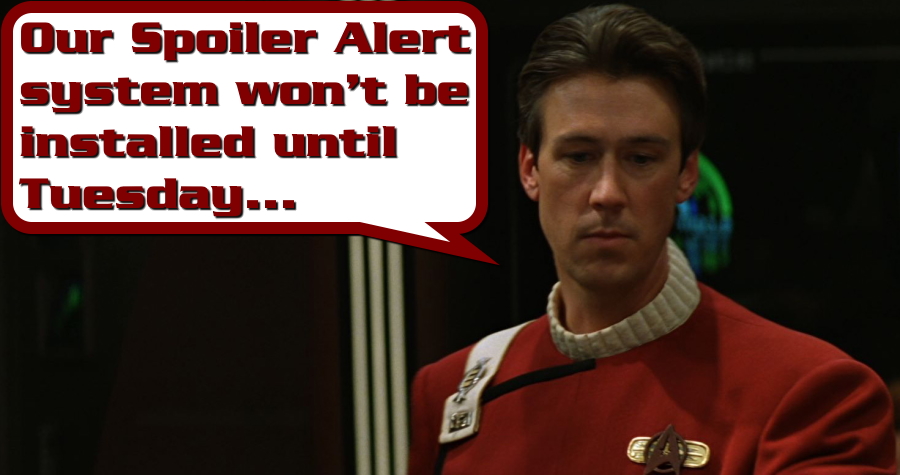
Spoiler Warning: There are spoilers ahead for Strange New Worlds Seasons 1 and 2. Spoilers are also present for the following Star Trek productions: The Original Series, Deep Space Nine, Voyager, Enterprise and Discovery.
Charades was an episode of two halves. One of these halves worked well, and the other… well, let’s just say that the other was not to my taste. It was undeniably a Star Trek episode to its very core, bringing to the fore concepts that the franchise has used going all the way back to The Original Series. We also got an interesting exploration of a previously unseen aspect of Vulcan culture, character development for both Spock and Nurse Chapel, and some comedic moments that stuck the landing.
On the other hand, Charades relied far too heavily on the kind of “cringe humour” that defined sitcoms like Friends, with parts of the “Spock must pretend to be Vulcan” storyline evoking the same kind of feelings as watching Robin Williams’ character try to be in two places at once in Mrs Doubtfire. That kind of situational humour really isn’t my cup of tea… and while I can tolerate it in small doses and for a one-off story, it means that Charades is unlikely to be an episode I’ll choose to revisit very often in future.
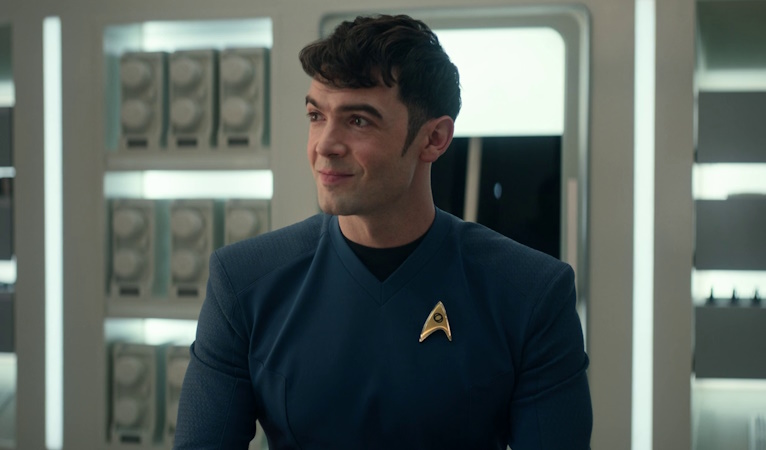
It was a treat to welcome back Mia Kirshner as Spock’s mother, Amanda. Kirshner reprised her role from Seasons 1 and 2 of Discovery, where she was seen alongside both Spock and Michael Burnham. Burnham wasn’t mentioned on this occasion, which I suppose is an interesting omission given that the story called back to Spock’s childhood and had a focus on the divide between humans and Vulcans. But Amanda’s presence was more than enough to carry this storyline – and I found it to be the most interesting and certainly the most impactful part of Charades.
It was hinted at, even as far back as The Original Series, that being a human married to a Vulcan could be difficult. Enterprise greatly expanded our knowledge of human-Vulcan relations, and showed how Vulcans could take an almost sneering view of a species they regarded as not as sophisticated or developed. Through Amanda’s story in Charades, we get to see how that manifests on an individual level, and how Vulcans can discriminate against humans – or even show revulsion and hate.
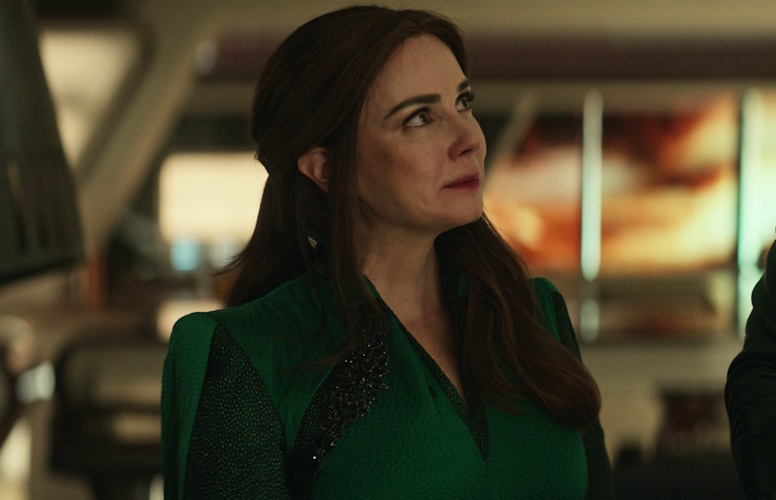
This ended up being a particularly powerful storyline. Amanda, as Spock came to realise, had to endure a great deal of hardship as a human living on Vulcan. Even as Vulcans came to accept him as one of their own, Amanda remains a perpetual outsider, constantly subject to being talked down to, shunned, disregarded, and treated differently because of who she is. The cool intellectual and logical nature of Vulcans means that this discrimination manifests differently – but it’s there nevertheless, and we come out of Charades with a much stronger appreciation for Amanda and her strengths after having seen what she continues to experience.
This idea that Vulcans’ aloofness and intellectual prowess can easily slide into a sense of superiority is nothing new in Star Trek; it was front-and-centre in depictions of the Vulcans in Enterprise in particular. But this very personal, individual exploration of that – and the impact it can have on non-Vulcans who have to endure it – is something different and interesting. Strange New Worlds has found a new way to build upon the lore of Star Trek, expanding our understanding of one of the franchise’s most iconic races – and their flaws.
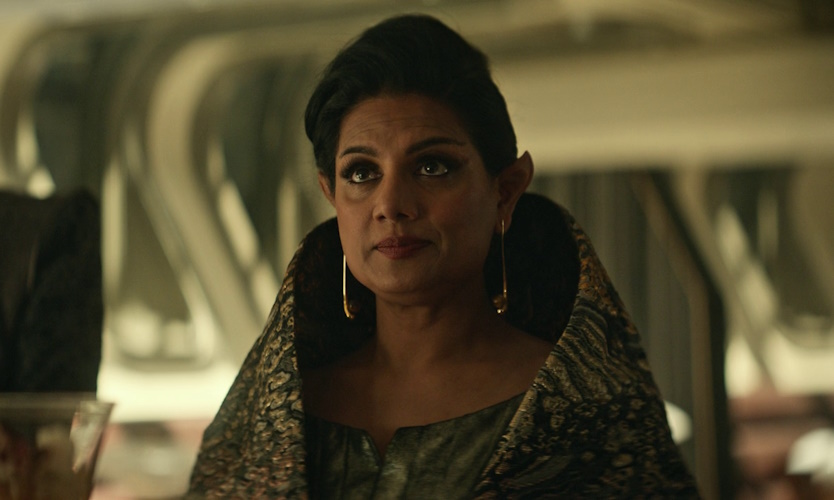
Star Trek has done the “character transformed” idea in multiple ways on multiple occasions, from Jadzia Dax’s friends embodying her Trill symbiont’s past hosts in Deep Space Nine through B’Elanna Torres being split into human and Klingon personalities in Voyager. So in that sense, Charades’ “Spock gets turned into a human” premise isn’t entirely original. But for a character who’s been struggling with his human and Vulcan sides, it was an interesting move.
However, I’d argue that Season 1’s The Serene Squall had already done much of the heavy lifting on Spock and his internal conflict. That episode reframed the idea as a kind of analogy for gender identity, and made a great deal of progress for Spock in terms of his character arc in this series – an arc that has to take him from the more emotional presentation seen in Discovery and get him much closer to the way he was in The Original Series. We also got Spock Amok in Season 1, which focused on Spock’s relationship with T’Pring and the stresses that his role in Starfleet and his half-human side was taking. On its own merit what Charades did in that regard was interesting – but given that The Serene Squall was a mere eight episodes ago… its impact is, I would argue, lessened.
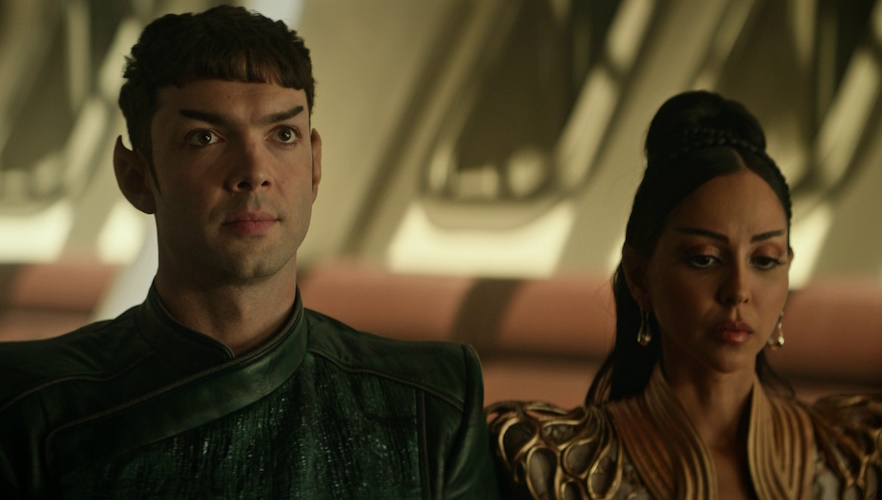
And I think that speaks to a broader concern about Strange New Worlds as a whole: its focus on legacy characters and their characterisations. Out of fifteen episodes that have been broadcast so far, we’ve had two that focused primarily on Spock and his relationship with T’Pring, and two more in which Spock and Nurse Chapel’s relationship was a major plot point. Season 2 has also spent a disproportionate amount of time so far on legacy characters, with Una, Nurse Chapel, Dr M’Benga, Spock, Captain Kirk, Uhura and latterly Captain Pike all getting moments in the spotlight. This is starting to come at the expense of other characters.
Pelia, the Enterprise’s new chief engineer, was mentioned by name in Charades but hasn’t been seen on screen for a couple of episodes now. And while La’an and Ortegas both had lines of dialogue this week, they were swept along by a narrative current outside of their control. I’m all for learning more about Spock’s background, don’t get me wrong. As a Trekkie, and as someone who’s firmly invested in this world, I like the idea. But Strange New Worlds has a limited amount of time at its disposal; the show runs ten-episode seasons, and after this, only one more season is guaranteed to be produced. As fascinating as it is to spend time with Spock, given that this episode’s core story felt more than a little derivative of what we got in two episodes of Season 1, its main story is one that could have been reduced – if not skipped outright – in favour of stories focusing on some of the show’s new characters.
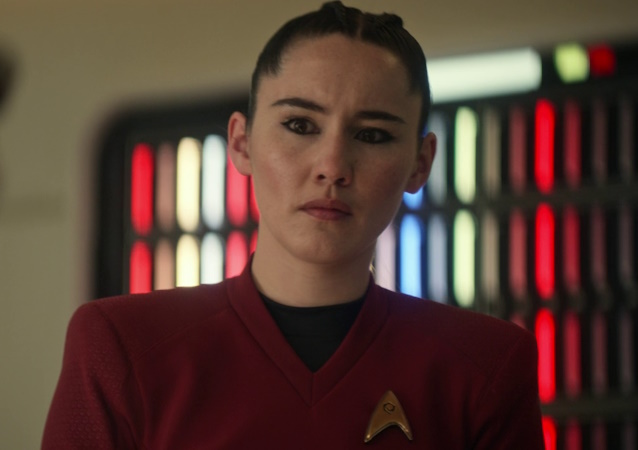
Charades’ style of “cringe humour,” something often seen in American sitcoms, really isn’t my thing. I found a few moments in the episode damn near painful to watch, particularly when jokes and gags were made at Spock’s expense. That is, however, purely a matter of personal taste, and as far as I can see, the episode’s sense of humour stuck the landing and achieved what it was aiming for… even if it isn’t something I personally enjoyed. There were absolutely some laugh-out-loud moments, moments where I had to pause Charades for fear of missing what would come next as I was laughing so hard. The premise of the episode is inherently silly: Spock being transformed into a human right before an important dinner with his fiancée. And as one of Strange New Worlds’ more lighthearted offerings, that side of the story worked as intended.
There is a slightly uncomfortable edge to some of this humour, though – and while I have no doubt that this was unintentional on the part of the writers and producers, it’s still worth acknowledging. Going all the way back to The Original Series, the character of Spock has stood apart from his crewmates. Though mental health, autism, and neurodivergence were never stated explicitly in Star Trek, Spock has, for the longest time, been someone that folks who are autistic or neurodivergent have related to. Charades stripped away part of this presentation, and did so largely for comedic purposes. That wasn’t always the most comfortable thing to watch, especially with the aforementioned “cringe” aspect to the episode’s humour. I don’t think we need to zero in on this, nor spend too long criticising Charades here, but it’s absolutely worth acknowledging this aspect of the story.
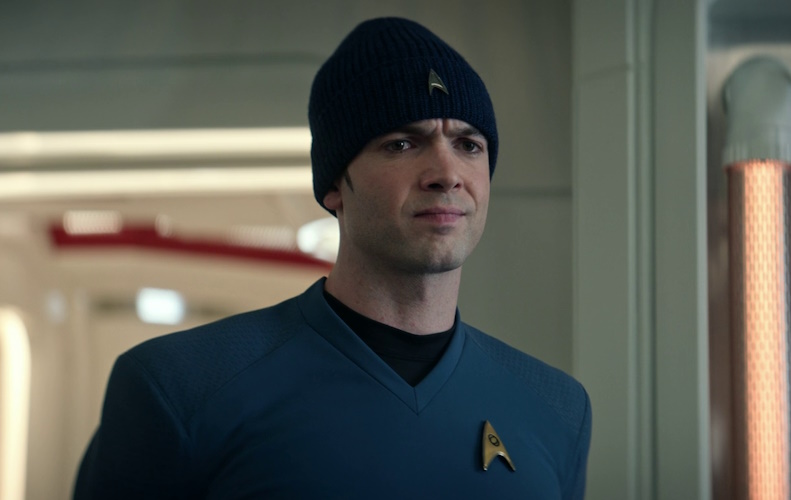
Conversely, and to be fair to Charades, it showed us a different side to Spock – but one that was equally rooted in many of the same neurodivergent aspects of his character. The episode’s script compared Spock’s handling of emotions to that of an adolescent, but if we continue our analogy for Spock being autistic or an “outsider” to the world of human emotion, what we see is someone experiencing these emotions in their strongest, most raw form. Just as many neurodivergent folks struggle to understand emotion, others feel them intensely, and this intensity was something new for Spock – but something no less interesting to see.
Again, the way this was played was largely for comedic effect, as Spock’s over-exaggeration of some of his feelings and emotions was part of this “cringe humour” thing that Charades had going on. But if we can look past that, I think there’s a case to be made that we saw a different side to Spock, one that flipped his logic and cool, usually emotionless presentation on its head – but it was a presentation of Spock that was no less relevant or relatable than it has been in the past.
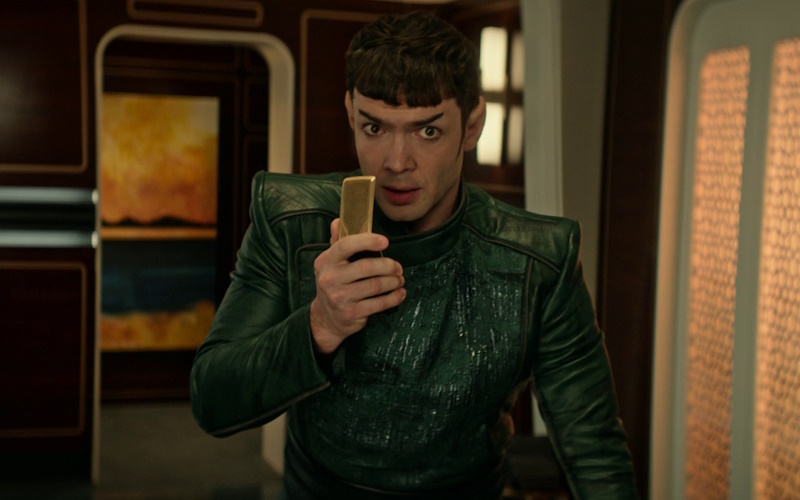
There was a comment made before the season aired by one of the show’s executive producers (a comment I’ve now lost so I can’t find to quote from directly) that said something along the lines of “Strange New Worlds will push the boundaries of canon.” That alarmed me somewhat, because the series has to fit into a long-established world, and sometimes what producers and writers call “pushing the boundaries” can actually mean “ignoring and/or erasing.” And I think in Charades’ development of Nurse Chapel’s relationship with Spock, we get to see an example of this pushing of the boundaries.
The Original Series implied on several occasions that Chapel had feelings for – or at least a crush on – Spock. But it never went beyond that; the two characters, when they interacted, maintained a level of professionalism and perhaps friendship… but never anything more. There was no hint at a background of having once been lovers or ex-partners, and while nothing in The Original Series should explicitly rule out the kind of relationship that we see the two seemingly ready to embark upon in Charades, it’s certainly something that takes these two long-established characters and pushes them in a new direction.
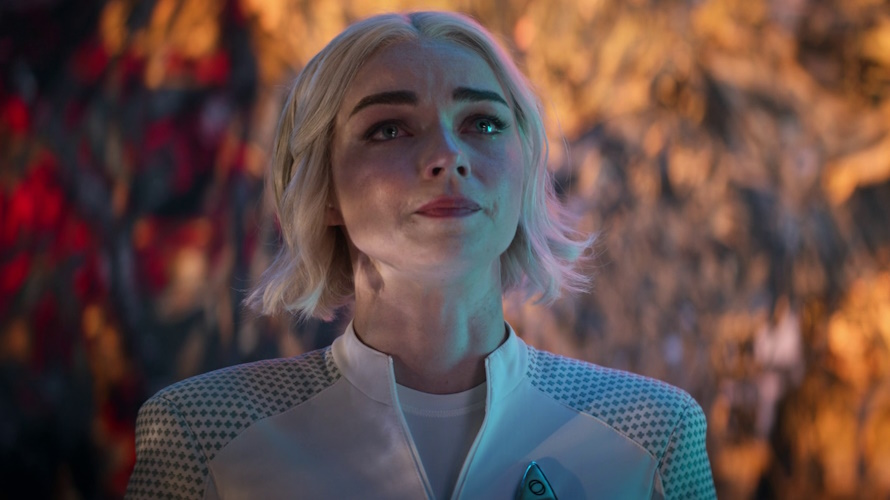
In the context of Strange New Worlds itself, this relationship works well. Pairing up Spock and Nurse Chapel succeeded in Season 1, and their relationship has only deepened since then. In a way, we could argue that this adds to our understanding of the characters and where they were in The Original Series – and as they interacted so infrequently in Star Trek’s first incarnation, it’s perfectly fine to bring them together in this way. It’s also not the only change made to either character from their original appearances.
That being said, putting Spock and Nurse Chapel into this kind of romantic (or at least physical) relationship is something that works best when taking Strange New Worlds in isolation. As new characters on a new show, they absolutely have the potential to do this. But for both characters, Strange New Worlds is a prequel, and it’s unclear how this relationship will work for either of them – nor how it will move either character closer to their TOS presentation.
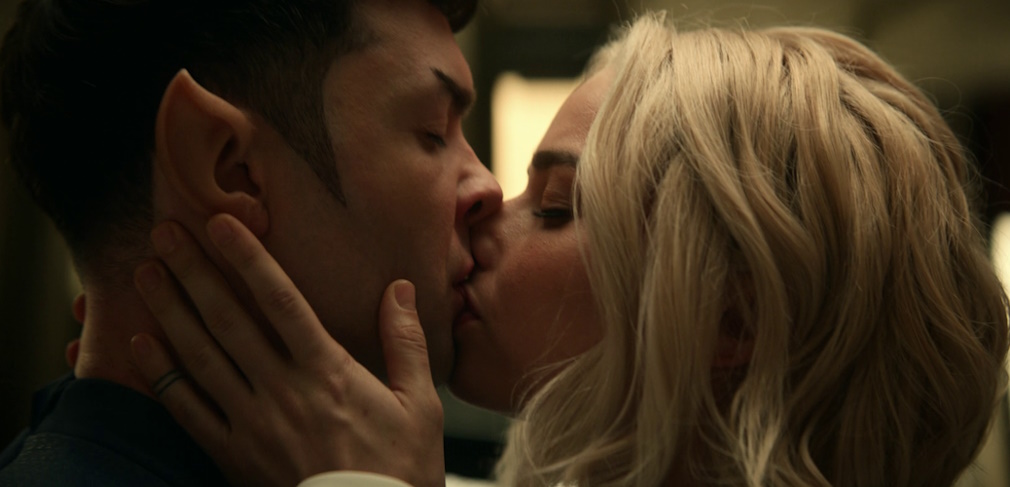
In terms of visual effects, Charades excelled. The mysterious anomaly on the surface of the moon was interesting, and its pale blue hue made it look different from other similar anomalies seen elsewhere in Star Trek. Within the anomaly itself, where Uhura, Ortegas, and Chapel ended up, I felt the “interdimensional space” set was perhaps a little small, but nevertheless succeeded at feeling sufficiently otherworldly. When compared to similar VFX sets, especially the Trill memory world from Discovery’s third season, there’s no contest, and it’s great to see that Paramount has massively improved its animation work.
There might’ve been a little of Season 1’s Children of the Comet in the set design used for the Kerkhovian interdimensional realm, but for most viewers I daresay that would pass unnoticed. Overall, it was an excellent and suitably “alien” space, both in terms of its appearance as an anomaly in space and when the away team arrived there in person.
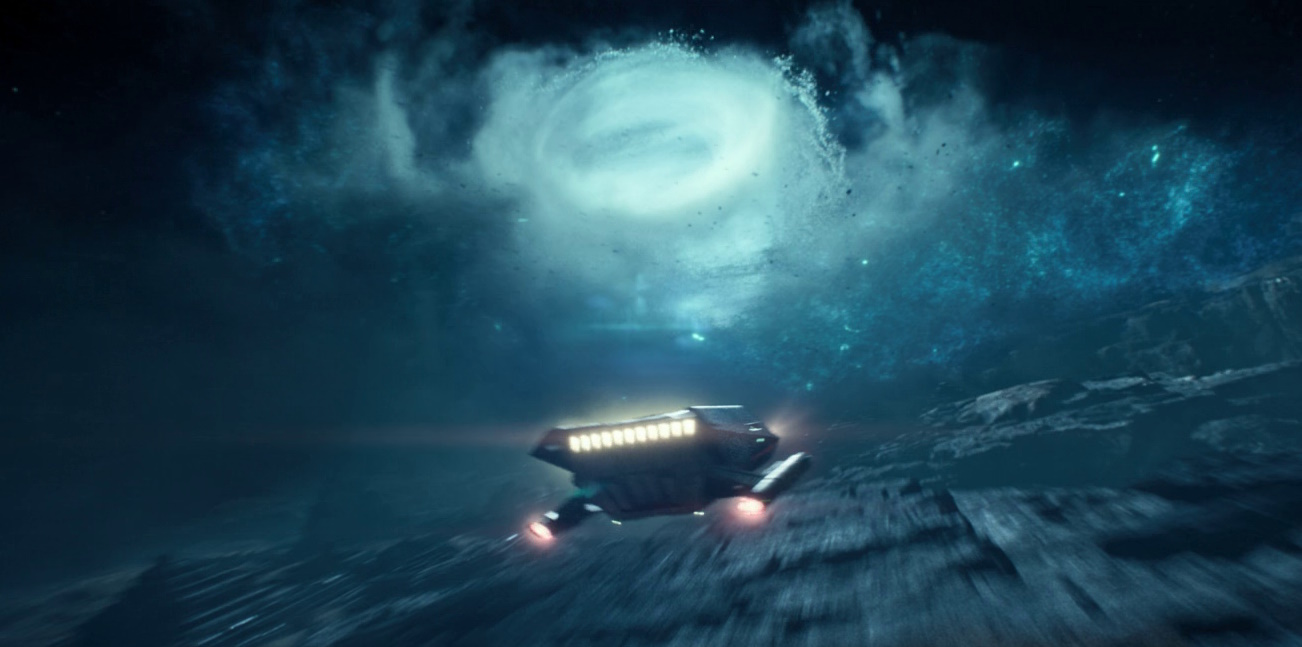
With a return to Vulcan and a focus on Spock’s family, there was the potential to bring back Sarek as well as Amanda. James Frain played the role of Sarek remarkably well in Discovery, and it would have been interesting to have seen more of the Spock-Sarek feud that was alluded to in The Original Series. Spock made the barest of references to their estrangement in Charades, but there might’ve been scope to do more had the episode retained a tighter focus on Vulcan and Spock’s family.
While T’Pring’s mother certainly leaned into the Enterprise style of aloof and arrogant Vulcans, I wasn’t really sure what to make of her father. T’Pring’s father seemed to be the archetypal “henpecked” husband, doing little more than agreeing with her and backing up her opinions. This kind of stock character has very little personality, and while it was intended to be lighthearted, I’m not sure how well it works in-universe when we think about how Vulcans tend to act. Is his behaviour logical?
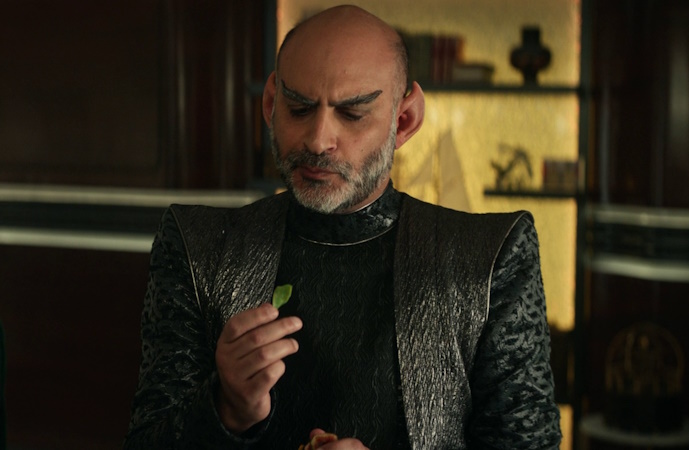
Despite the inherent silliness of Spock’s sci-fi ailment, I was impressed by Nurse Chapel’s dedication to her patient. This side of the story took on a much more serious tone, and if we set aside the relationship drama angle for a moment, we got to see a great example of two dedicated medical professionals working against the clock to help a sick patient. Star Trek can do medical drama well, and while this wasn’t the main focus of Charades, it’s still a good example of how well medical stories can work in the franchise.
For Nurse Chapel we also got to see a bit more of her professional life – the “archaeological medicine” fellowship that she hoped to work with. This was interesting, as it seems to harken back to something we learned about Chapel in The Original Series: her engagement to a Federation archaeologist. The episode What Are Little Girls Made Of? introduced this relationship, and it’ll be interesting to see what – if anything – comes of it in Strange New Worlds, especially given Chapel’s newfound relationship with Spock. Will she break things off with Spock to pursue another partner? If so, what impact will that have on Spock? Maybe we’ll find out later this season… or in Season 3!
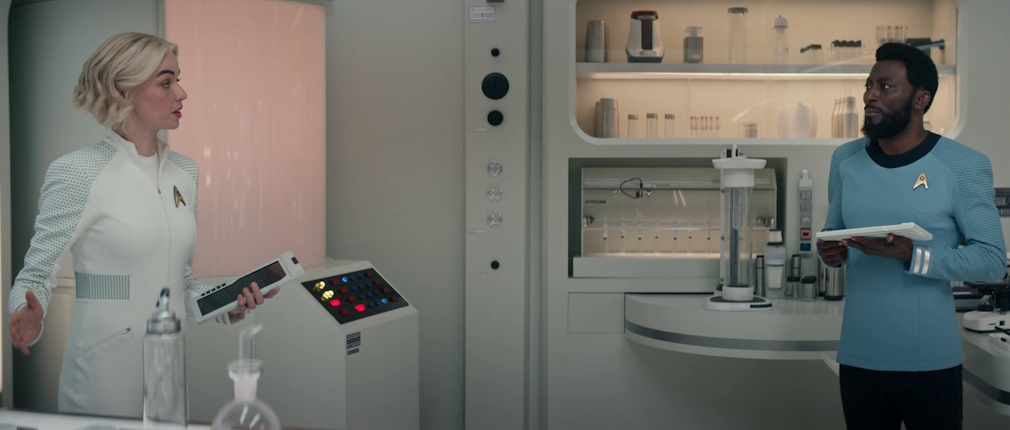
So I think I’ve said all I can about Charades for now. Its use of cringe humour means it ranks quite low on my list of Strange New Worlds episodes… but that isn’t to say it was out-and-out “bad.” It did its own thing and did it well, at least as far as I can tell. That style of humour simply isn’t to my taste, and it’s for that reason more than any other that I found it to be a less enjoyable experience than other episodes that the series has offered.
It took me a while to get around to this review, and I’m still getting caught up on Strange New Worlds after a longer-than-expected break. Thanks for bearing with me, and I promise to get around to full reviews of the remaining episodes of the season in due course!
Star Trek: Strange New Worlds Seasons 1-2 are available to stream now on Paramount Plus in countries and territories where the service is available. The Star Trek franchise – including Strange New Worlds – is the copyright of Paramount Global. This article contains the thoughts and opinions of one person only and is not intended to cause any offence.

